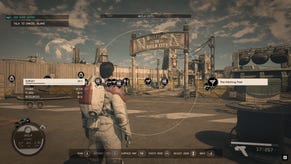Here's how to find Crysis Remastered's benchmark
Find out if your PC can handle Can It Run Crysis? mode
I'm still in the process of putting Crysis Remastered through its paces on PC, but if you want to see for yourself if your PC can indeed run Crytek's revamped FPS classic, then you'll be pleased to know the game has its own dedicated benchmarking tool. You won't find it in the game itself, sadly, as it's tucked away in the game's system files. Here's how to find it.
Fortunately, Crysis Remastered's benchmark tool is pretty easy to find once you've had a root around its installation folder. Hopefully you installed the game somewhere sensible on your PC that's easy to get to, but if not, you can always search for "Crysis Remastered" in Windows Explorer if you're having trouble locating it. Once you've found the Crysis Remastered the folder, all you need to do is follow these simple steps and you'll be benchmarking the game in no time at all.
- Open the Crysis Remastered folder.
- Open the Bin64 folder.
- Double-click on the Benchmark app to open the launcher.
I'd suggest creating a shortcut to the Benchmark app to stick on your desktop if you want to use it multiple times, and you can do that by right-clicking the Benchmark icon, selecting Create Shortcut, and dragging said newly-created shortcut onto your desktop for safe keeping.
Once you open up Crysis Remastered's benchmark, a small launcher appears that lets you select the game's graphics settings preset, ray tracing quality settings, resolution and anti-aliasing settings. You also get the option of two levels to benchmark: Island and Village.
Annoyingly, the benchmark always seems to open in a window and doesn't give you the option to go fullscreen. That means that if you're benchmarking the game at a lower resolution than your monitor's native resolution, you may not get particularly accurate benchmark results.
Still, once the benchmark's finished loading, it automatically runs through your chosen scene four times before spitting out the results in a txt file at the end. As well as your average frame rate for each run-through, it tells you your minimum and maximum frame rate (and precisely which frame it happened on, too), as well as your memory usage, how long the benchmark took to run, and other assorted stats.
So far, I've only had a chance to test it with Nvidia's new RTX 3080, and man alive, it's a tough old cookie, that's for sure. Even at 1920x1080, the RTX 3080 barely scraped an average of 30fps in the Island benchmark with graphics and ray tracing set to Can It Run Crysis? and anti-aliasing on TSAA, although I'm sure my Intel Core i5-8600K processor is probably holding it back a bit here.
Still, I found it to be largely representative of what I saw in-game. While the game's forests were a bit easier on the old frame rate, the island bits used in the benchmark ran at an identical 30-odd fps. Interestingly, the game doesn't actually give you TSAA as an option in its anti-aliasing menu - only SMAA 1X, TAA, SMAA 1TX and SMAA 2TX. Still, even with everything maxed out at 1080p, the RTX 3080 sure had its work cut out. Stay tuned for more Crysis Remastered benchmarks soon.






.jpg?width=291&height=164&fit=crop&quality=80&format=jpg&auto=webp)


